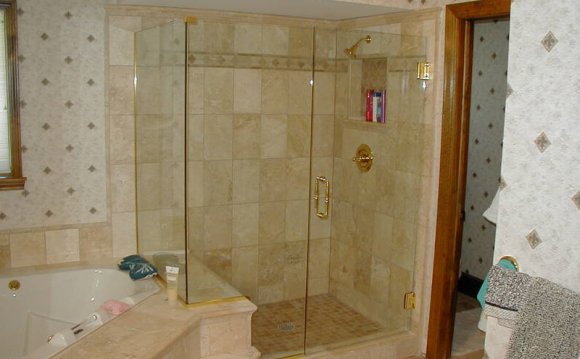
Restrooms are botched above other space in the house. The big problem is liquid. it is central toward room’s purpose, but it’s a protean source of damage. And designers unduly give attention to cosmetic makeup products at the cost of critically important building tips. Broadly speaking, the 2 factors that cause botched restrooms tend to be an unwillingness to blow the full time and cash it takes to make a bathroom correctly, and inept or inexperienced folks dealing with the task. After 10 years of renovating bathrooms, I’ve torn down plenty of other people’s errors. The following is my listing of the seven sins of bathroom design.
1. Inadequate waterproofing
Bathrooms tend to be damp areas initially, design showcases second. Every part regarding the planning and construction of restrooms should take liquid exposure into consideration. In the event that waterproofing bill is not at least 5per cent to 10percent associated with work price, somebody is cutting sides or does not know very well what they’re performing. Badly made bath pans and improperly flashed windows in baths regularly fail and trigger major harm. Inexpensive building and decorating products like MDF, particleboard, veneered cabinetry, laminate counters, thinly plated steel accessories, and wallpaper make for planned obsolescence.
Design as an alternative with durable homogeneous materials like stone (including man-made varieties), cup and cup block, tile, terrazzo, tangible, stainless-steel, and hard hardwoods. For baseboards and casings, i love to utilize PVC or composites particularly MoistureShield ( Wood cabinetry and trim should always be a nickel’s width from the flooring to stop liquid contact; furniture-leveling foot are excellent for letting cabinetry remain dry.
2. Slippery flooring
Shine is okay for faucets, but it’s detrimental to restroom flooring. Glossy tile and polished stone make for slippery, hazardous flooring. These materials cause a lot of falls, and they’re maintenance nightmares, also, revealing every scratch and putting on unevenly.
Flaws and bumps are good qualities in bathroom floors. The ground must be manufactured from tumbled rock or tile that provides sufficient grip. Variation in color, surface, and size additionally really helps to avoid drops, and it looks great, too. Use flooring tiles smaller than 12×12 to increase the amount of grout joints for improved grip. Shower floors need also smaller tile with plenty of grout joints, both available traction and comply with the ground slope. Porous tumbled rock (travertine, limestone, etc.) is an ideal bathroom-floor product, both for its grip and its particular low-to-zero maintenance. I enjoy creating small-stone and unglazed-tile mosaics for shower floors. Daltile ( has a reasonably priced water-jet service enabling good details and curves becoming cut in even the tiniest tiles, allowing the development of nearly every picture or geometry in a tile field at much less expenditure than hand-laid stone mosaics.
Tread cautiously when it comes to a wood flooring. Teak, ipé, and other tropical forests might create attractive bathroom flooring, but building a secure, durable timber flooring for a bathroom costs greater than laying basic tile over backerboard and thick plywood. I nevertheless doubt wood’s long-lasting durability, despite a set up. For carpeting, only forget it. Water and carpeting pad are an awful brew, and don’t get me personally begun about carpeting around commodes. Ick! The year 1975 had been really detrimental to restrooms.
3. No natural light
Our forefathers were so grateful to possess indoor plumbing system, they didn’t require atmosphere. But nowadays, men and women anticipate much more from a bathroom. The tiny, wet, and dingy interior bathroom with some round light fixture into the roof is old-school.
Admittedly, lack of day light is a sin in almost any area, but restrooms feel particularly creepy without sun light. Find any possible solution to take it into your bathroom. Use etched-glass or glass-block interior windows to transport in light from an adjoining area that exterior windows. Use skylights. Utilize light pipes. Utilize architectural cup block dropped into a hole when you look at the flooring to create light in from the space the following. Utilize motorized mirrors salvaged from a shuttle mission—whatever it requires. When nothing else works, use a trompe l’oeil tile design that suggests a light origin exists, or decorate a sun and clouds regarding the roof. I’ve utilized these tips and much more besides.
4. Boring tile
Daunted by apparently unlimited choices, way too many individuals just go with a tried-and-true blanket of 4×4 white tile. It’s humdrum, nonetheless it’s safe.










